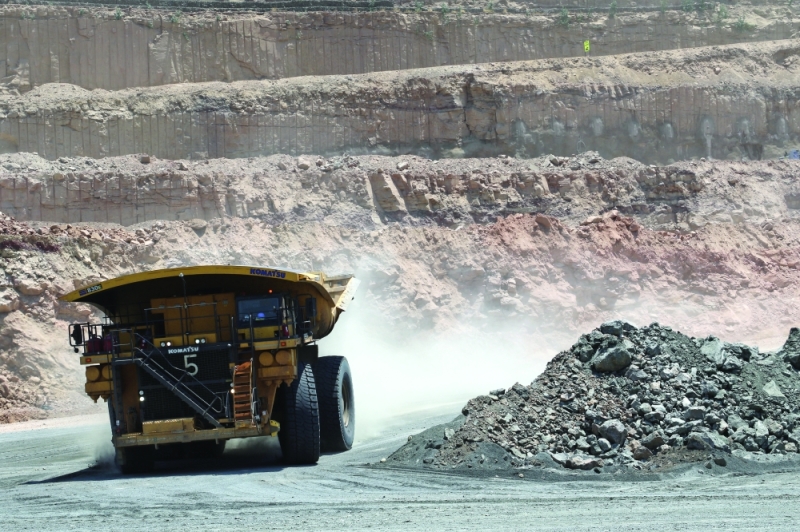De Beers, gov't quell tensions
Mbongeni Mguni | Monday February 27, 2023 06:00


Debswana is the producer at the heart of tensions between the state and the global group.
Executive Vice-President Diamond Trading, Paul Rowley told Mmegi that the diamond group was not factoring in a possible interruption in supplies as part of risks to its outlook for the year.
“We are not expecting that to happen,” he said in a briefing on Thursday afternoon. “We are partners and it’s in all our interests to ensure that we have a strong diamond industry into the future. “I’m not anticipating that there will be an interruption in supply at this stage. “It’s a long-term business.”
President Mokgweetsi Masisi recently revealed tensions between government and De Beers over the renewal of a deal which governs the sale of diamonds from Debswana, the local producer which contributes about two-thirds of De Beers’ annual rough diamond output.
Negotiations for the latest deal began in 2018, with both sides appointing five-member teams to work on their heads of agreement. The current agreement expired in September 2020 and has been extended several times, initially because of the pandemic and later without clear explanations by either party.
The next agreed deadline is June 2023 and while the deal is traditionally a top-secret affair, Botswana is known to be pushing hard for greater value from its diamonds, a position Masisi recently confirmed while adding that, in the alternative, the country could walk away from the 54-year-old partnership with De Beers.
The closely-guarded De Beers/Government of Botswana sales deal is one of the global diamond industry’s most valuable covenants, as the country is the world’s second-largest producer of rough diamonds after Russia.
Rowley said De Beers was taking a long-term view about its relationship with government and Botswana, with a view to securing an agreement that serves both parties and the industry. The two parties are negotiating both the new sales deal and the renewal of Debswana’s mining leases which expire in 2029.
“We are negotiating the mining lease agreements and we have long-term investments. “We start negotiating these sorts of things earlier rather than later to ensure that there’s continuity and to that point, we are in discussions that include the licences and the sales agreement,” he told Mmegi.
Masisi’s recent comments touched on the long-running debate about whether the country has been receiving its fair share of value from the De Beers’ arrangement.
Government and De Beers equally co-own Debswana, but the state currently earns about 81% of returns from the company in the form of royalties, taxes and dividends. Under the 2011 sales agreement, Okavango Diamond Company (ODC), the state-owned diamond trader, is entitled to purchase up to 25% of Debswana’s production for independent marketing and price discovery outside of the De Beers’ sales ecosystem.
However, local technocrats are convinced more revenues for the country can be accessed further up the diamond value chain, a position fortified by the stranglehold on pricing in the midstream that De Beers has.
Government negotiators are reportedly pushing for a larger share for ODC, while talks are finalised for a partnership with HP Antwerp. The start-up Belgium-based diamond trader is purchasing diamonds from Karowe Mine based on their value as polished stones, rather than the standard practice of paying for rough product.
According to HB Antwerp, the unique arrangement with Lucara has resulted in 40% higher diamond royalties to the Botswana government over the past two years, a deal Masisi has said has “enormous scalable potential”.
However, analysts told Mmegi that bundling the negotiations over the new sales deal into the mining licence renewals could, however, work in De Beers’ favour as the diamond giant is expected to leverage its multi-billion dollar plans for Debswana’s future into the talks.
In recent years, De Beers has directly or indirectly carried the lion’s share of the costs of major expansions at Debswana such as Cut 8, with a budget of P24 billion and Cut 9, which is ongoing with a budget of P16 billion. De Beers is also expected to carry most of the cost of the mammoth P65 billion underground project planned for Jwaneng, which will produce the world’s largest underground diamond.
The expansions at Jwaneng, together with similar work at Orapa, represent the core diamond production future for Botswana going into the next decades.
Rowley stressed that De Beers’ focus was on a lasting relationship with Botswana.
“Long-term investment is really important if we are going to have sustainable operations going into the future,” he said.
“It isn’t just about today and it’s not about short term but long term.
“We believe we will continue here while also working elsewhere. “This is about making sure that the natural product can take us into the future.”
